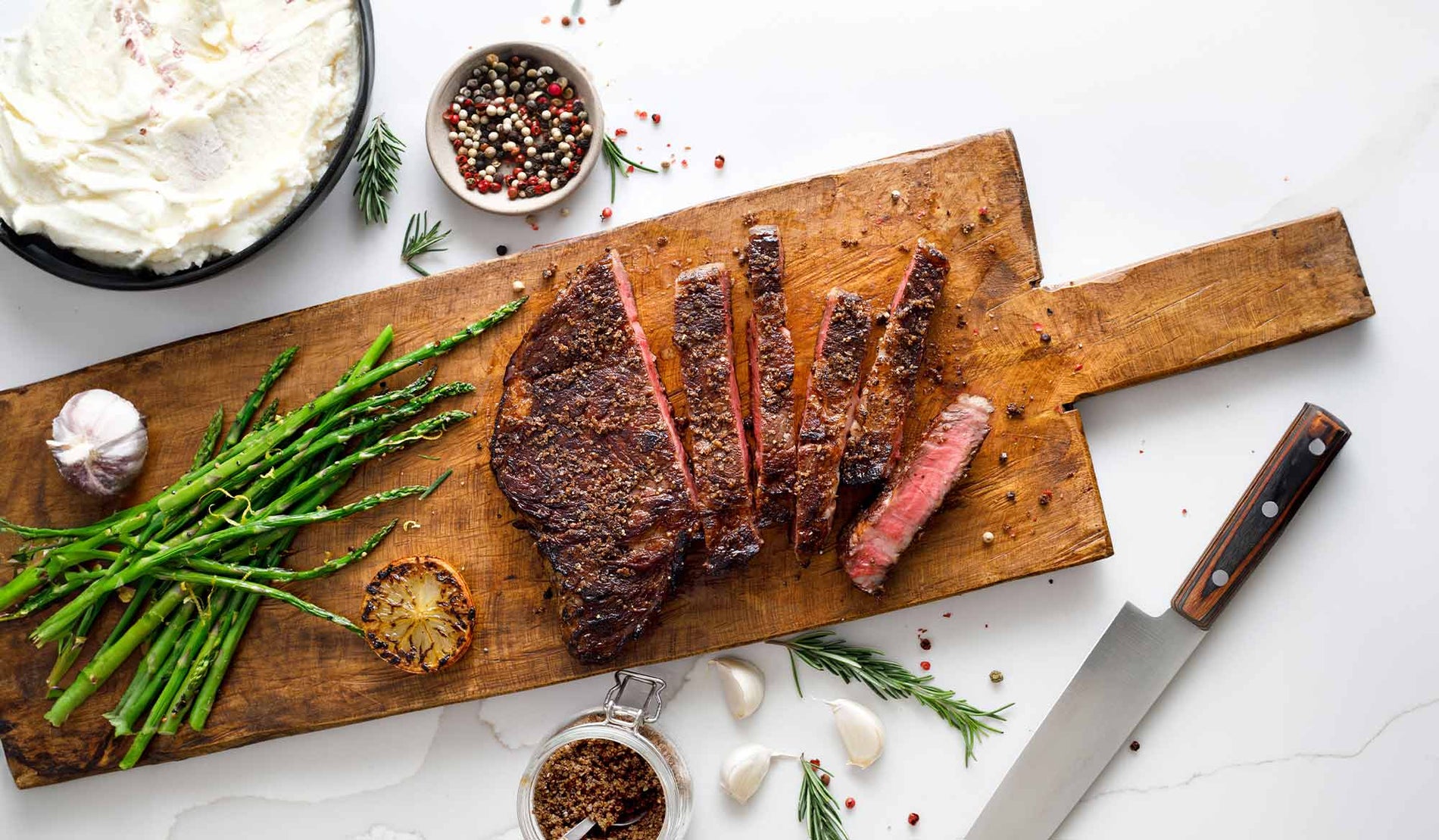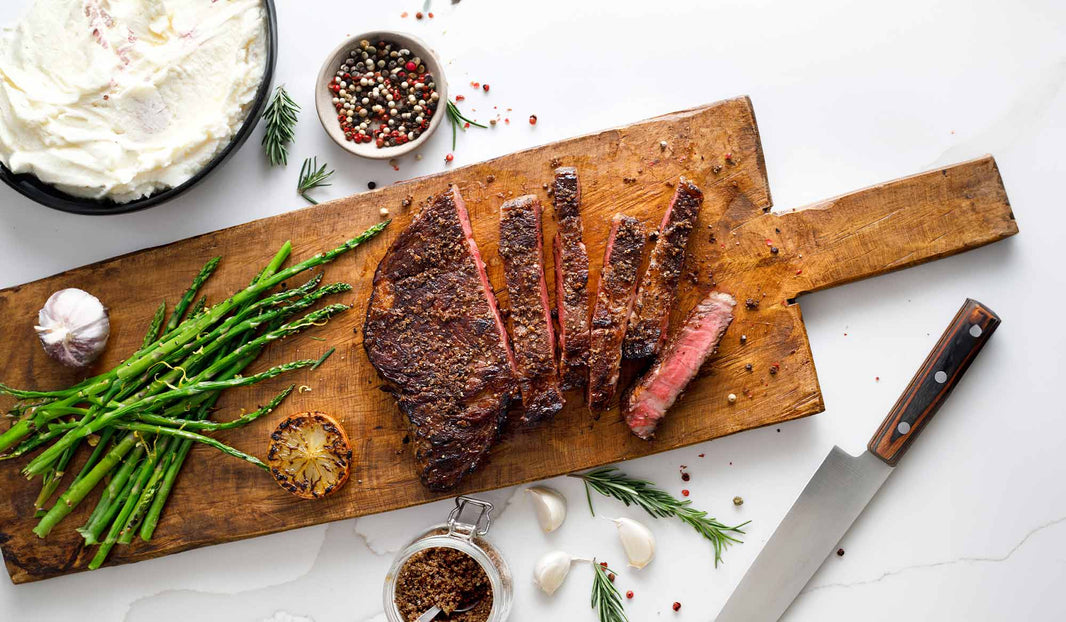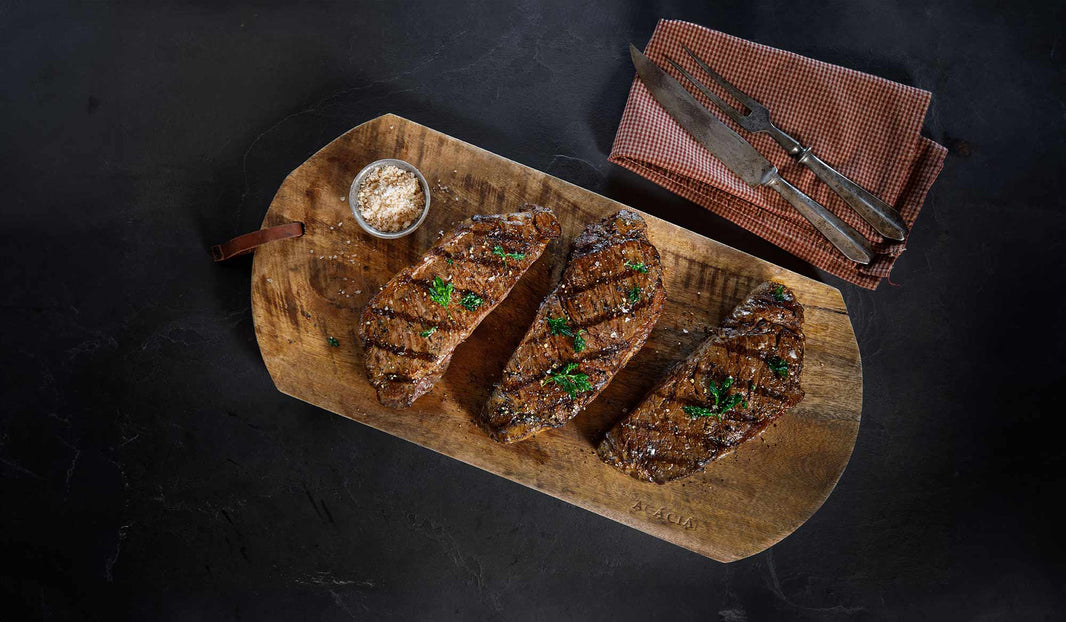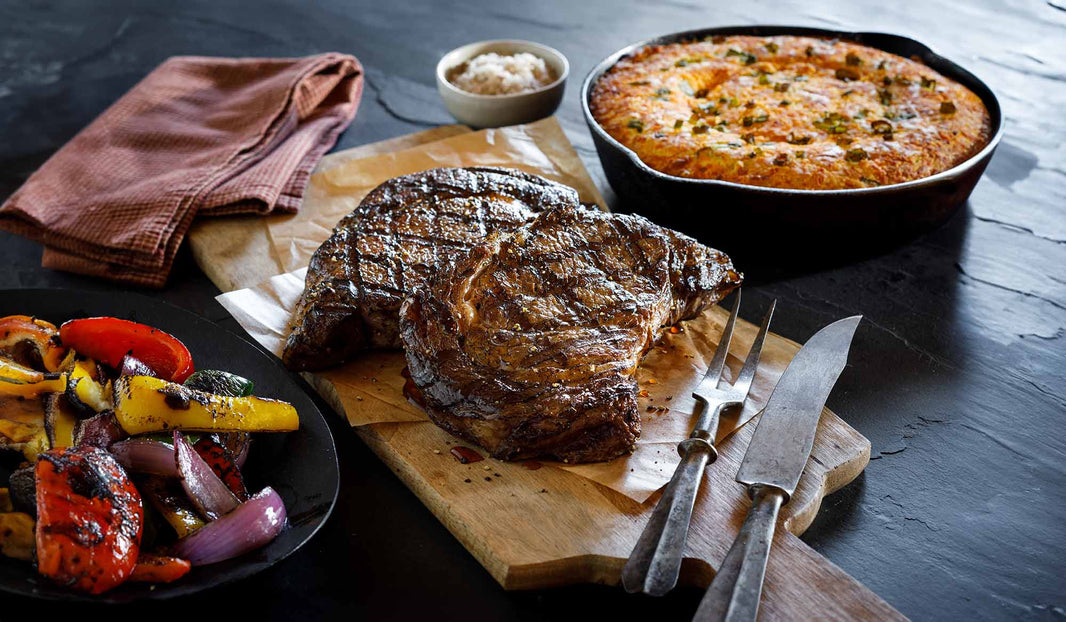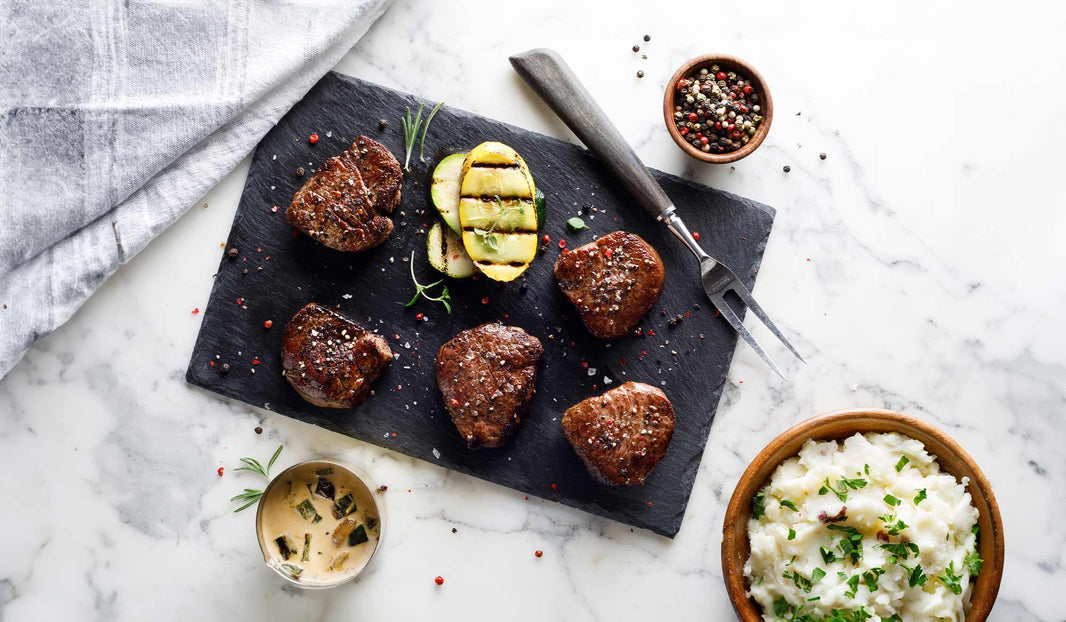When you're shopping for beef, you may have come across terms like "USDA Prime" or "USDA Certified Prime" and wondered what they meant. This labeling is more than just a marketing term—it’s part of a U.S. government-established grading system that helps consumers understand the quality of the meat they're buying. But what exactly does "Prime" mean, and why is it important to pay attention to these grades? Let’s explore USDA beef grading and why marbling plays a crucial role in the juiciness, tenderness, and flavor of the meat.
USDA Certified Choice beef is also high quality but has less marbling than Prime. Choice steaks and roasts are very tender, juicy, and flavorful.
But what is marbling?
One of the most critical aspects of beef grading—and why USDA Prime stands out—is marbling. Marbling refers to the thin streaks of intramuscular fat that run through the meat. These are the white flecks you see when you look at an uncooked steak.
Marbling is a key factor because it directly influences:
- Tenderness: Fat melts during the cooking process, making the meat moist and tender.
- Flavor: More marbling means a richer, beefier flavor. As the fat melts into the muscle fibers, it creates a depth of taste that’s hard to beat.
- Juiciness: Fat helps retain moisture during cooking, preventing the meat from drying out.
For steak lovers and grill enthusiasts alike, marbling is like a golden seal of quality. The higher the marbling, the juicier and more flavorful the beef. Marbling also allows more versatility in preparation, as it makes the meat more forgiving to different cooking methods.
For those who are serious about top-quality beef, it’s essential to know where your meat comes from. We’re proud to offer only premium-quality beef, adhering to strict standards. Whether it’s the rich marbling of a USDA Prime steak or the assurance of superior ranching practices in one of our Reserve best-sellers, you can trust Four Sixes Ranch Brand Beef to deliver beef that is as delicious as it is high quality.



